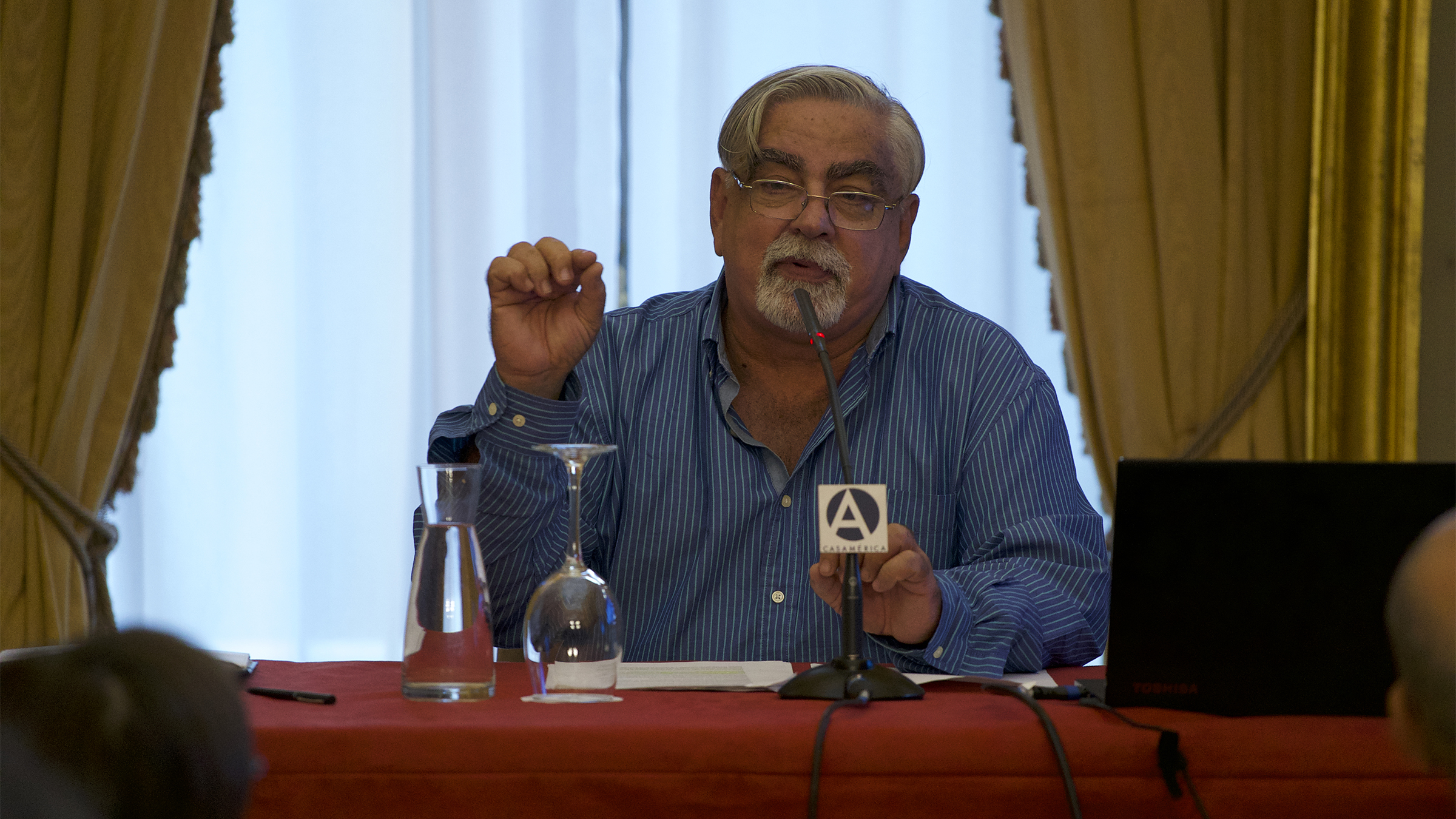RELATED ARTICLE
Memories of Underdevelopment: Imaging History
The Criterion Collection

Cuban cinema has no present-day champion more devoted than Luciano Castillo. As the director of the Cinemateca de Cuba, an organization formed in 1960 by the Instituto Cubano del Arte e Industria Cinematográficos (ICAIC) in order to protect and promote Cuba’s filmmaking legacy, Castillo works tirelessly to get the classics of the country’s cinema in front of audiences, programming screenings both at home and abroad, and helping to coordinate restoration efforts. Castillo, a critic by training, is also the coeditor of Bitácora del cine cubano (Logbook of Cuban Cinema),a planned five-volume compendium spearheaded by the Cinemateca that explores the history of the country’s cinema from the 1890s through the beginning of the twenty-first century. The fourth volume was published earlier this year.
Recently, Castillo also proved an invaluable resource for Criterion. In 2018, as I was working on coproducing our edition of Memories of Underdevelopment—Tomás Gutiérrez Alea’s 1968 masterpiece about a wandering bourgeois Habanero who keeps Cuba’s revolutionary fervor at arm’s length while mocking others for fleeing the country—Castillo was our guide in navigating the country’s often bureaucratic film industry, helping us locate and secure materials for several supplements as well as introducing us to Mirtha Ibarra, Gutiérrez Alea’s widow. Castillo again lent a helping hand this year for Criterion’s release of Martin Scorsese’s World Cinema Project No. 3 , a box set including a new restoration of the 1968 Cuban film Lucía. Directed by Humberto Solás, the movie is a kaleidoscopic portrait of three Cuban women, all named Lucía, living through three crucial moments in the country’s history: the late nineteenth century, the early thirties, and right after the 1959 Cuban Revolution. While we were working on presenting the movie, Castillo put us in touch with Carlos Barba Salva—the director of Humberto (2013), the definitive documentary on Solás’s career—who edited a special presentation of his film to accompany our release.
Having the opportunity to work alongside Castillo made me curious to know more about the work that he does at the Cinemateca de Cuba, which has been under his leadership for the better part of the past decade, and his perspective on Cuban film’s place in both the national culture and world cinema at large. A few weeks back, right on the heels of the release of World Cinema Project No. 3, I called Castillo at his home in Havana to talk with him about his stewardship of his country’s rich filmmaking history. Portions of our conversation appear below in my translation from the Spanish.
Let’s talk about the history of the Cinemateca. How did you come to your current position within the institution?
The Cinemateca was the first institution created by the ICAIC, in 1960, with an element that soon set it apart from other, similar institutions around the world, and that was that its functions were not limited to the capital. Since its inception, the Cinemateca—we call it a mobile film museum—has traveled to the six provincial capitals and other important cities, first with the 35 mm films, then VHS tapes, later DVDs, and now with Blu-rays. In that sense, the Cinemateca has maintained an important role in the country’s cultural spheres. Its founding purpose, besides preserving the legacy of the national cinema, was to contribute to the creation of a qualitatively better-educated audience of moviegoers.
Working at the Cinemateca was long a dream of mine. I’m from Camagüey, a province nearly six hundred kilometers from Havana. I’ve always lived for and by film. I finally managed to enter the industry as a researcher at the local film center. I then headed the media library at the International School of Film and Television School in San Antonio de los Baños, on the outskirts of Havana, for twenty years before I was offered the opportunity to assume the director’s role at the Cinemateca. And I’ve managed to be here at the moment when the Cinemateca turns sixty and continues to plan toward the future.
What type of challenges do you face when preserving—and restoring—film materials on the island?
Each film comes with its own set of challenges. Last year I had the opportunity to be at the Academy of Arts and Motion Picture Sciences in Los Angeles, where I was invited to the labs working on the restoration of Death of a Bureaucrat [1966], another classic by Gutiérrez Alea, and the technicians told me that the toughest problems they’d encountered had been associated with Cuban films because of problems found in the original film material. These were caused by poor storage conditions over the years, in which the requisite climate-control conditions have been interrupted by periods of electrical outages.
While storage conditions have improved under the current management of ICAIC, which has prioritized the issue, we don’t have the ability to undertake proper restoration efforts in Cuba. We must therefore turn to entities outside of our island to help in these initiatives, and we’re deeply thankful to those organizations that have aided us in restoring classics of our heritage, such as The Film Foundation, the Academy, the film archive at UCLA, and the Cineteca di Bologna.